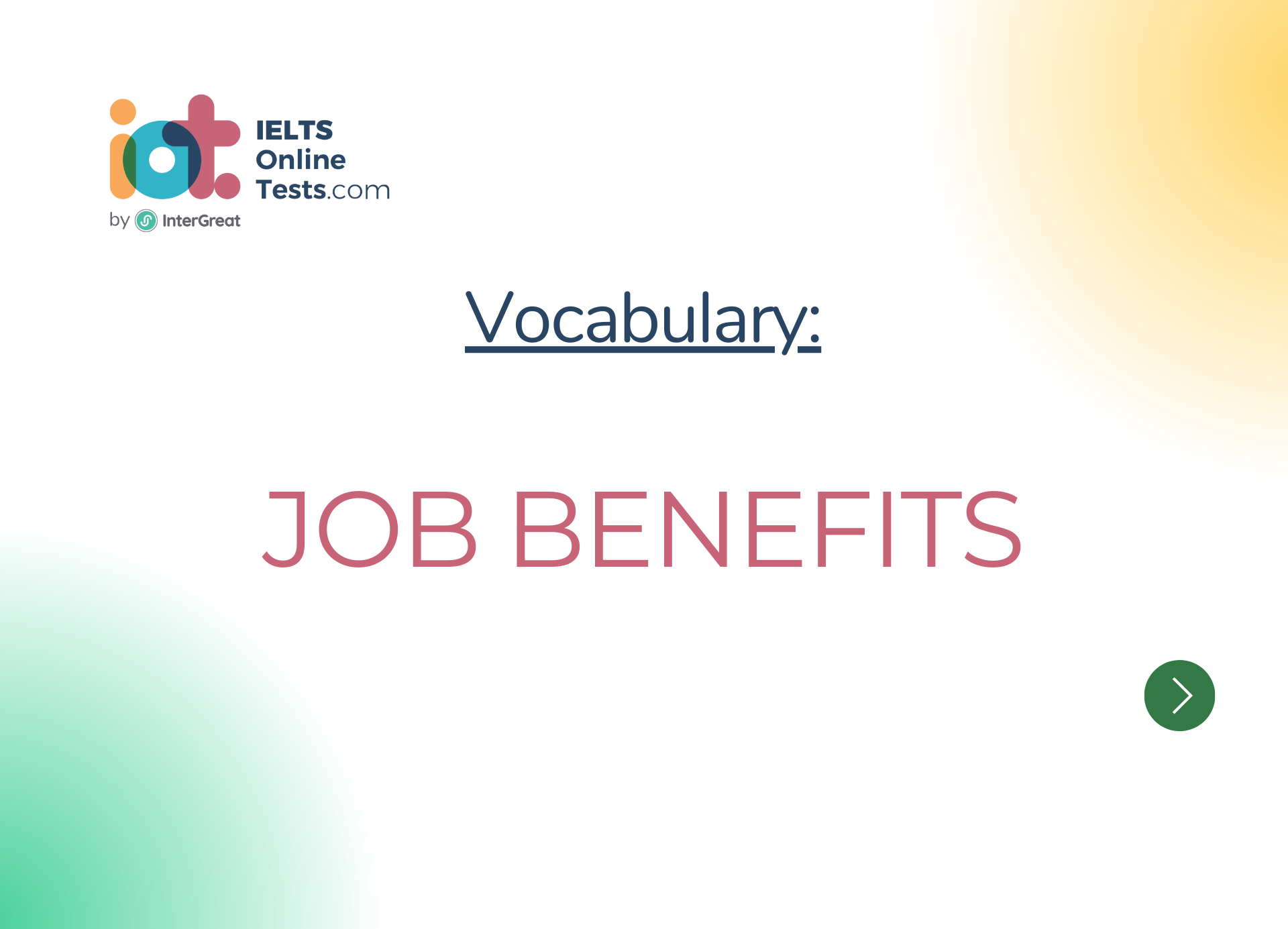
Job benefits
Here are some vocabulary words related to "Job Benefits" in detail, suitable for the IELTS band score range of 3.0-4.5:
I. Compensation:
Salary: The fixed amount of money an employee earns for their work, typically paid on a monthly or annual basis.
Bonus: Additional payment given to an employee based on performance, company profits, or other criteria.
Commission: Payment or percentage of sales earned by a salesperson for each successful transaction.
Benefits package: The combination of monetary and non-monetary rewards provided by an employer to employees.
II. Insurance and Retirement:
Health insurance: Coverage that helps individuals pay for medical expenses and healthcare services.
Life insurance: Protection that provides a lump sum payment to beneficiaries upon the insured person's death.
Retirement plan/pension: A financial arrangement that provides income for employees after they retire from work.
401(k) plan: A retirement savings plan sponsored by an employer, with contributions from both the employee and employer.
III. Time Off and Leave:
Paid time off (PTO): Days or hours for which an employee is compensated while not working, such as vacation days or sick leave.
Maternity/paternity leave: Time off granted to parents following the birth or adoption of a child.
Sabbatical: An extended period of leave granted to employees for travel, research, or personal development.
Flexible working hours: A work schedule that allows employees to vary their start and end times within certain parameters.
IV. Work-Life Balance:
Telecommuting/Remote work: Working from a location other than the traditional office, often using technology to stay connected.
Flextime: A flexible work schedule that allows employees to choose their start and end times within a set range.
Family-friendly policies: Workplace policies designed to support employees in balancing work and family responsibilities.
Wellness programs: Initiatives that promote employees' physical and mental well-being, such as gym memberships or stress management workshops.
V. Employee Development:
Training and development: Programs and activities aimed at enhancing employees' skills and knowledge.
Professional growth: Opportunities and resources provided by employers to support employees' career advancement.
Mentoring: A relationship where an experienced employee guides and supports a less experienced employee's professional development.
Continuing education: Learning activities pursued by employees to gain new knowledge and stay up-to-date in their field.
VI. Work Environment:
Work-life balance initiatives: Policies or programs aimed at helping employees maintain a healthy balance between work and personal life.
Collaborative workspaces: Physical or virtual spaces designed to facilitate teamwork and communication among employees.
Employee recognition programs: Formal or informal systems to acknowledge and reward employee achievements and contributions.
Work-from-home options: The ability to work remotely or from a location other than the office.
VII. Health and Wellness:
Wellness incentives: Rewards or benefits offered to encourage employees to adopt and maintain healthy lifestyle habits.
Mental health support: Resources or programs aimed at promoting employees' mental well-being and providing assistance when needed.
Fitness facilities: On-site gyms, fitness classes, or access to discounted gym memberships for employees.
Employee assistance programs (EAP): Confidential counseling or support services provided to employees and their families.
Remember to practice using these vocabulary words in context to enhance your understanding and fluency. Engaging in conversations, reading relevant materials, and practicing writing with these terms will help you become more comfortable and proficient in using them accurately.




